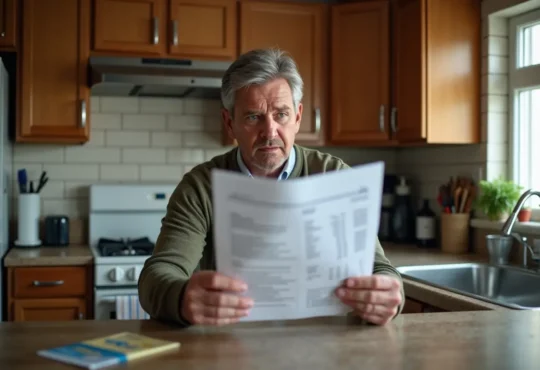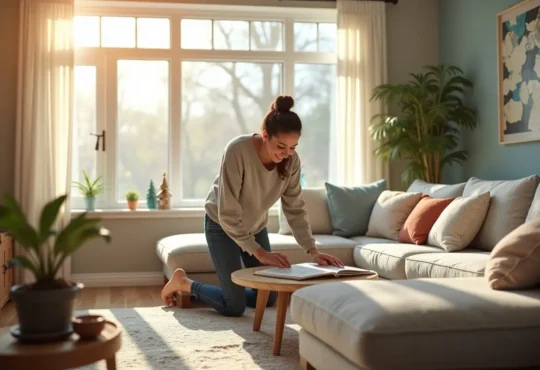
How to Remove Bathroom Sink Drain
Have you ever encountered a sluggish or clogged bathroom sink drain? If left unaddressed, it can disrupt your daily routine and potentially lead to unpleasant odors or water damage. Fortunately, with the right tools and a bit of know-how, you can remove and clean your bathroom sink drain without breaking a sweat.
Contents
- 1 Necessity of Drain Maintenance
- 2 Signs That Your Bathroom Sink Drain Needs Attention
- 3 Assembling the Necessary Tools
- 4 Step-by-Step Guide: Removing and Cleaning Your Bathroom Sink Drain
- 4.1 Step 1: Clear the Area and Prepare for Work
- 4.2 Step 2: Remove the Stopper or Drain Cover
- 4.3 Step 3: Inspect and Clean the Stopper
- 4.4 Step 4: Clear the Drain with a Hair Clog Removal Tool
- 4.5 Step 5: Apply Drain Cleaning Solution
- 4.6 Step 6: Flush the Drain with Hot Water
- 4.7 Step 7: Reassemble and Test the Drain
- 4.8 Step 8: Perform a Final Inspection and Cleaning
- 5 Maintaining a Clean and Functional Bathroom Sink Drain
- 6 When to Call a Professional Plumber
- 7 Cost Considerations for Bathroom Sink Drain Maintenance
- 8 Additional Plumbing Maintenance Tips
- 9 Embracing Eco-Friendly Plumbing Practices
- 10 Importance of Regular Home Inspections
- 11 FAQs
Necessity of Drain Maintenance
A well-maintained bathroom sink drain is essential for ensuring a smooth flow of water. It prevents clogs that can lead to unpleasant odors, water backups, and potential damage to your plumbing system. Regular cleaning and maintenance can help extend the lifespan of your drain and prevent costly repairs down the line.
Signs That Your Bathroom Sink Drain Needs Attention
Before diving into the removal and cleaning process, it’s crucial to recognize the telltale signs that your bathroom sink drain requires some TLC. Here are a few indicators to watch out for:
- Slow Drainage: If you notice that water is taking an unusually long time to drain from your sink, it could be a sign of a partial clog or buildup of debris.
- Standing Water: If water remains in your sink even after it should have drained, it’s a clear indication that your drain is clogged and needs immediate attention.
- Unpleasant Odors: A foul smell emanating from your sink drain is often a sign of trapped debris, hair, or other organic matter that has started to decompose.
- Gurgling Sounds: Strange gurgling or bubbling noises coming from your drain can signify a blockage or air trapped in the pipes.
Assembling the Necessary Tools
Before embarking on the drain removal and cleaning process, it’s essential to gather the appropriate tools to ensure a smooth and efficient experience. Here’s a list of recommended items to have on hand:
- Bathroom cleaning detergent or vinegar
- Hair clog removal tool (a long, flexible tool with a hooked end)
- Pliers or adjustable wrench
- Bucket or container to catch any water or debris
- Scrub brush or old toothbrush
- Gloves (optional, but recommended for added protection)
- Flashlight (for better visibility under the sink)
Step-by-Step Guide: Removing and Cleaning Your Bathroom Sink Drain
Now that you’ve identified the need for drain maintenance and gathered the necessary tools, it’s time to roll up your sleeves and get to work. Follow these step-by-step instructions to remove and clean your bathroom sink drain effectively:
Step 1: Clear the Area and Prepare for Work
Before beginning, clear the area under your bathroom sink to create a workspace. Remove any stored items and place a bucket or container beneath the drain to catch any water or debris that may fall during the process.
Step 2: Remove the Stopper or Drain Cover
Locate the stopper or drain cover in your sink and remove it. In some cases, you may need to unscrew a nut or clip to detach the stopper from the drain mechanism. If the stopper is stuck or difficult to remove, try using pliers or an adjustable wrench to gently twist and pull it free.
Step 3: Inspect and Clean the Stopper
Once the stopper is removed, inspect it for any buildup of hair, soap scum, or other debris. If necessary, soak the stopper in a mixture of equal parts vinegar and water to help dissolve any stubborn gunk. Use a scrub brush or an old toothbrush to gently scrub away any remaining residue.
Step 4: Clear the Drain with a Hair Clog Removal Tool
With the stopper removed, you’ll have direct access to the drain opening. Insert the hair clog removal tool into the drain and gently push or pull to dislodge hair and debris. Be careful not to force the tool too aggressively, as this could damage the drain pipes.
Step 5: Apply Drain Cleaning Solution
If the clog persists after using the hair clog removal tool, it may be time to use a drain cleaning solution. Follow product instructions closely. Some solutions need time to sit before flushing with hot water.
Step 6: Flush the Drain with Hot Water
Once you’ve applied the drain cleaning solution (if necessary) and allowed it to work its magic, it’s time to flush the drain with hot water. Run the hot water for several minutes to help dislodge any remaining debris and ensure a thorough cleaning.
Step 7: Reassemble and Test the Drain
After flushing the drain, it’s time to reassemble the components. Carefully reattach the stopper or drain cover, ensuring that it’s securely in place. Turn on the faucet and allow water to flow through the drain, checking for any remaining clogs or slow drainage.
Step 8: Perform a Final Inspection and Cleaning
If the drain is flowing smoothly, congratulations! You’ve successfully unclogged and cleaned your bathroom sink drain. However, it’s always a good idea to perform a final inspection and cleaning of the area under the sink. Use a flashlight to check for debris, then wipe down the pipes and area with a clean cloth or paper towels.
Maintaining a Clean and Functional Bathroom Sink Drain
While removing and cleaning your bathroom sink drain is an essential task, it’s equally important to implement preventative measures to keep it functioning optimally. Here are some tips for maintaining a clean and functional drain:
- Regular Flushing: Periodically flush your drain with hot water to help prevent buildup and keep it flowing smoothly.
- Hair Catcher: Consider installing a hair catcher or drain cover to prevent hair and other debris from entering the drain and causing clogs.
- Avoid Pouring Grease or Oil: Never pour grease, oil, or other fatty substances down the drain, as they can solidify and contribute to clogs.
- Baking Soda and Vinegar: For a natural and effective drain cleaning solution, try pouring a mixture of baking soda and vinegar down the drain once a month, followed by hot water.
When to Call a Professional Plumber
While most minor clogs and drain issues can be resolved with the steps outlined above, there may be instances when professional assistance is required. Here are some situations where it’s advisable to call a licensed plumber:
- Persistent Clogs: If you’ve tried multiple methods to unclog your drain without success, it may be time to seek professional help.
- Slow Drainage Throughout the Home: If you’re experiencing slow drainage in multiple sinks or fixtures, it could indicate a more significant issue with your main plumbing lines.
- Structural Damage or Leaks: If you notice any signs of structural damage, such as cracks or leaks in the pipes under the sink, it’s best to have a professional plumber assess and repair the issue.
Cost Considerations for Bathroom Sink Drain Maintenance
The cost of maintaining your bathroom sink drain can vary depending on the extent of the work required and whether you choose to tackle the task yourself or hire a professional plumber. Here’s a general breakdown of potential costs:
- DIY Maintenance: If you opt to remove and clean the drain yourself, the costs will primarily be limited to the purchase of any necessary tools or cleaning solutions, which can range from a few dollars to around $20 or $30.
- Professional Plumber: Hiring a licensed plumber to unclog or replace your bathroom sink drain can cost anywhere from $100 to $300 or more, depending on the complexity of the job and the plumber’s hourly rate.
It’s worth noting that regular maintenance and addressing issues promptly can help prevent more costly repairs down the line, making it a worthwhile investment in the long run.
Additional Plumbing Maintenance Tips
While you’re focused on your bathroom sink drain, it’s a good opportunity to consider other plumbing maintenance tasks that can help ensure the smooth operation of your home’s plumbing system:
- Inspect Faucets and Showerheads: Check for any leaks, mineral buildup, or worn washers that may need replacement.
- Clean Aerators: Remove and clean the aerators on your faucets to improve water flow and prevent mineral buildup.
- Flush Water Heater: Regularly flushing your water heater can help remove sediment buildup and improve its efficiency.
- Check for Leaks: Inspect all visible pipes and connections for any signs of leaks or moisture, which could indicate a more significant plumbing issue.
Embracing Eco-Friendly Plumbing Practices
In today’s environmentally conscious world, it’s essential to consider eco-friendly practices when maintaining your plumbing system. Here are some tips to help reduce your environmental impact:
- Use Natural Cleaning Solutions: Opt for natural cleaning solutions like baking soda, vinegar, and lemon juice whenever possible, as they are less harmful to the environment than chemical-based cleaners.
- Conserve Water: Be mindful of your water usage by fixing leaks promptly, installing low-flow faucets and showerheads, and turning off the water when not in use.
- Dispose of Chemicals Properly: If you must use chemical-based cleaning products, dispose of them properly according to local regulations to prevent contamination of water sources.
Importance of Regular Home Inspections
Maintaining your bathroom sink drain is a crucial aspect of home maintenance. Also, it’s equally important to consider the overall condition of your plumbing system and home. Qualified professionals can identify potential issues during regular home inspections, preventing major problems and saving you time, money, and hassle.
A certified inspector evaluates your plumbing system during a comprehensive home inspection, including water supply lines, drain lines, fixtures, and appliances. They will assess other critical home areas like the roof, foundation, and electrical system. You’ll get a detailed report with repair or upgrade recommendations.
By scheduling regular home inspections, you can stay ahead of potential issues, prioritize necessary repairs, and maintain the value and safety of your home. Additionally, many home insurance policies require periodic inspections to maintain coverage, making it a wise investment for homeowners.
Regular maintenance and preventative measures, like periodic flushing and hair catchers, keep your bathroom sink drain functioning optimally. And when in doubt, don’t hesitate to seek the expertise of a licensed plumber, especially for persistent or complex plumbing issues.
FAQs
How do you unscrew a drain cover in a bathroom sink?
To unscrew a drain cover, locate the securing nut or clip first. Then, use pliers or an adjustable wrench to gently twist and loosen it, avoiding excessive force. Once loosened, you should be able to remove the drain cover by hand.
How do you unscrew a stuck bathroom sink drain?
If the bathroom sink drain is stuck and won’t unscrew, try applying a penetrating lubricant or rust dissolver to the threads. Allow it to sit for a few hours or overnight, then unscrew the drain using pliers or an adjustable wrench. If it’s still stuck, you may need to use a drain removal tool or seek professional assistance.
How do you remove a bathroom sink drain trap?
Start by placing a bucket or container underneath to catch any water or debris. Locate the slip nuts or compression nuts that connect the trap to the drain pipe and the wall pipe. Use pliers or an adjustable wrench to loosen and unscrew these nuts, allowing you to carefully remove the trap assembly.
How do you remove bathroom drainage?
You’ll need to access the drain pipes under the sink or behind the wall. Start by disconnecting the drain trap, then use a plumber’s snake or drain auger to clear any clogs or obstructions. If the issue persists, remove and replace sections of the drain pipe or seek professional assistance.





 Hi I'm Joe.
Hi I'm Joe. 